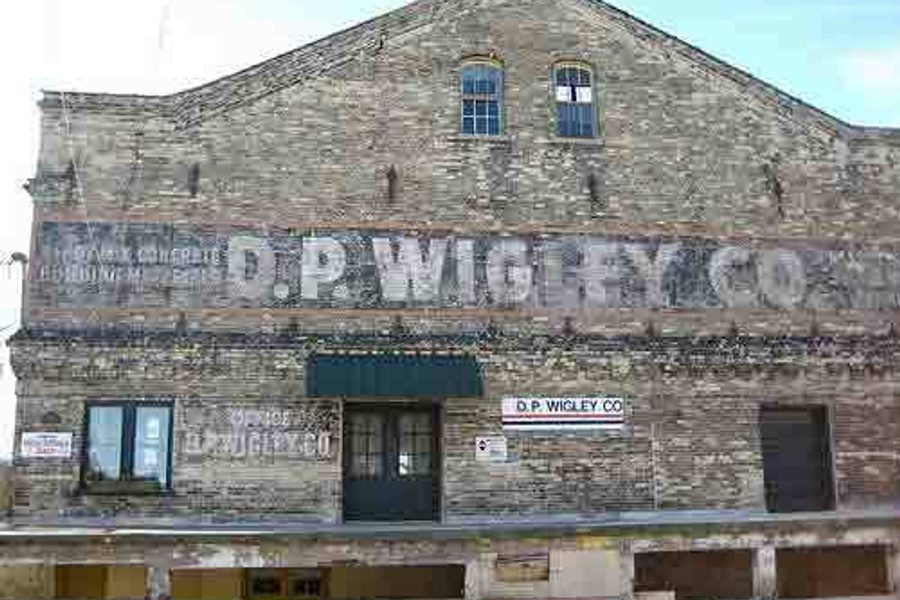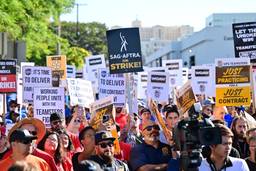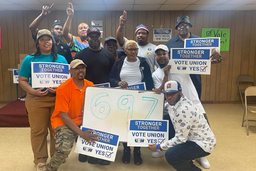
State has highest black male incarceration rate in country; twelve times the rate of white men.
By Roger Bybee
Wisconsin has long enjoyed a reputation as an enlightened, progressive state.
Its reputation goes back to the populist flavor of the state constitution, the strong movement for the abolition of slavery, the staunchly anti-corporate governor (and later senator) “Fighting Bob” LaFollette, the building of powerful labor and socialist movements, and one of the nation’s very best university systems.
But a visit to my hometown of Racine for a meeting this week was a painful reminder of how the city and state are moving toward a very different model of society: the mass destruction of family-supporting jobs coupled with the mass incarceration of thousands of young men who grew up in deprived, disorganized neighborhoods shattered by de-industrialization.
GHOSTLY FACTORIES — AND A MASSIVE NEW JAIL
Unemployment in Racine is now 16.7%, reflecting both the toll of the Great Recession and the permanent loss of about 13,500 manufacturing jobs between 1979 and 2007, 42% of the city’s industrial jobs. My hometown is filled with ghostly empty factories and vast empty, flat fields of brown grass where factories once turned out tractors, garden equipment, children’s Golden Books, machine tools, auto parts, farm machinery, and on and on.
In industrial towns like Racine, factories have been emptied out, with no family-supporting jobs to replace them. Meanwhile a flock of new prisons and jails have been filled up, providing jobs for some ex-factory workers and a cell for others.
Racine has a new $30 million jail that holds about six times as many prisoners as the one it replaced, which was completed only in 1980. A juvenile corrections facility now sits where the Rainfair clothing factory stood before its new owners sent the jobs to China.
PRISON POPULATION INCREASES NEARLY EIGHT-FOLD
With the path to legitimate success blocked for so many, it is only predictable that a certain percentage of young men, in particular, would be drawn to criminal activity. But unlike Wisconsin’s neighbor, Minnesota, which has only about one-third the number of prisoners despite roughly similar demographics and population, Wisconsin has not developed a major system of non-prison alternatives to help young men complete their educations, obtain training and jobs, and find a non-criminal path for their lives.
Statewide, the prison population has exploded from 2,973 in 1970 to 23,112 at the end of last year, representing nearly an eight-fold increase.
A sizable portion of these prisoners come from six counties which have all suffered devastating losses in industrial jobs: Milwaukee, Dane, Racine, Kenosha, Rock and Waukesha. The city of Milwaukee lost 65% of its industrial jobs between 1977 and 2002, with leading local corporations like Johnson Controls, Master Lock and AO Smith coming to employ more workers in Mexico than Milwaukee. In Rock County, Janesville—which lost its huge General Motors assembly plant at the end of 2008 — has an official unemployment rate of 13.1% and nearby Beloit has the state’s highest jobless rate of 18.3%.
Wisconsin carries the dubious distinction of having the highest rate of African-American male incarceration of any state in the nation. African Americans are incarcerated at 12 times the rate of whites. At every point in the downward slide toward prison, African-Americans find less favorable treatment than whites.
The cost of the state’s vast expansion of prisons and jails has meant a major drain on the revenues that once supported Wisconsin’s excellent university system, forcing a quadrupling of tuition over the last 20 years, according to Jay Burseth, president of the UW-Milwaukee Students Association. It has also triggered increasingly sharp struggles by UW students to hold down tuition, as covered last month in these pages.
As economist Michael Rosen has pointed out, the link between rising prison expenditures and declining educational opportunities is clear-cut. Even while crime has been declining, the number of prisoners kept climbing:
Between 1987 and 2007, Wisconsin actually cut its support for higher education by 6%. Only 6 states reduced their investment in higher ed by more. During the same period, Wisconsin increased corrections spending by 251%, 8th highest nation, despite a declining crime rate.
MORE PRISON SPENDING MEANS HIGHER TUITON, LESS ACCESS
Ironically, the cost of incarcerating of mostly poor young men has directly and a severely reduced the opportunities for young people to stay out of trouble, get a good education and lead a productive life. The diversion of state funds from colleges and technical schools to the prison system has forced a much heavier burden of tuition on those who would like to attend college.
Rosen notes the conclusions of a study committee composed of representatives of Wisconsin’s university system and technical colleges: “Wisconsin students from lower income families have less access to a college education than in the U.S. as a whole.”
According to Prof. Pam Oliver of UW-Madison, a leading scholar who has done extensive research on the metastazing of Wisconsin’s prison population, there has not yet been any systematic, full-scale study of the relationship between de-industrialization and the huge explosion in incarceration in Wisconsin.
But this linkage between the community devastation represented by the state’s vacant factories and the crowded jails and prisons now seems brutally clear. The connection stands as a major indictment of the shameful economic and social policies shaped by major corporations’ decisions and the policy choices of government officials unwilling to challenge corporate power.








